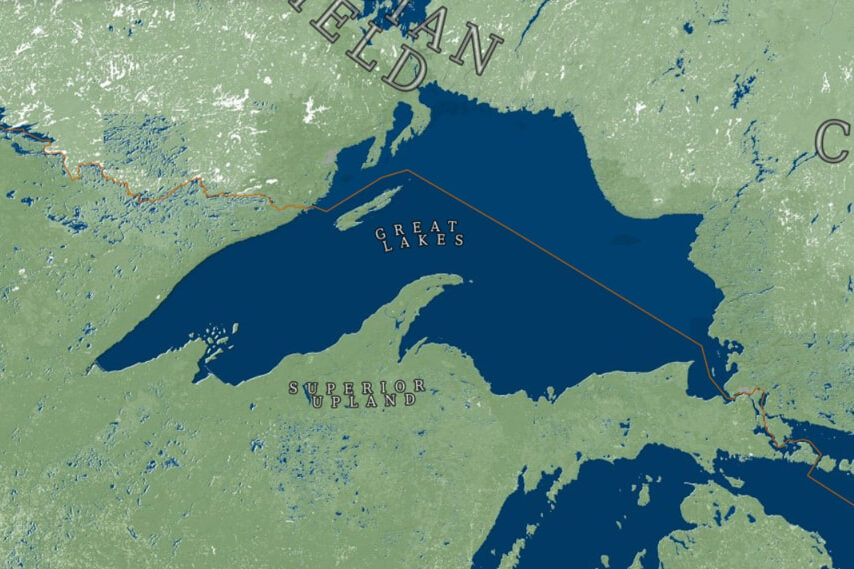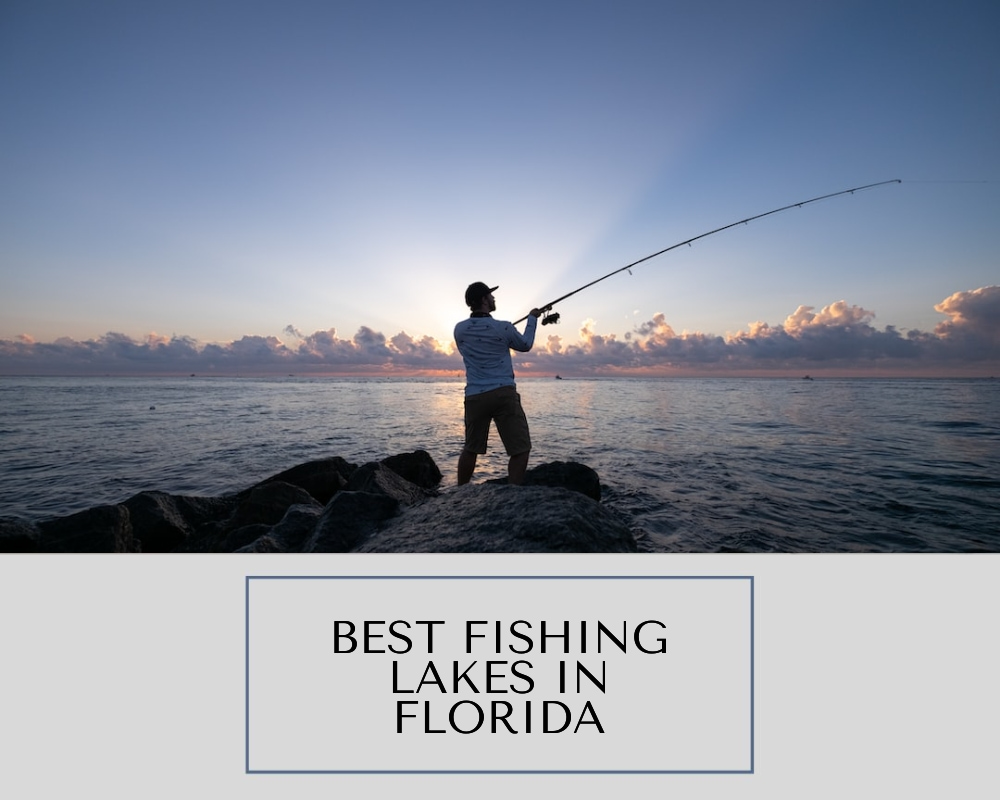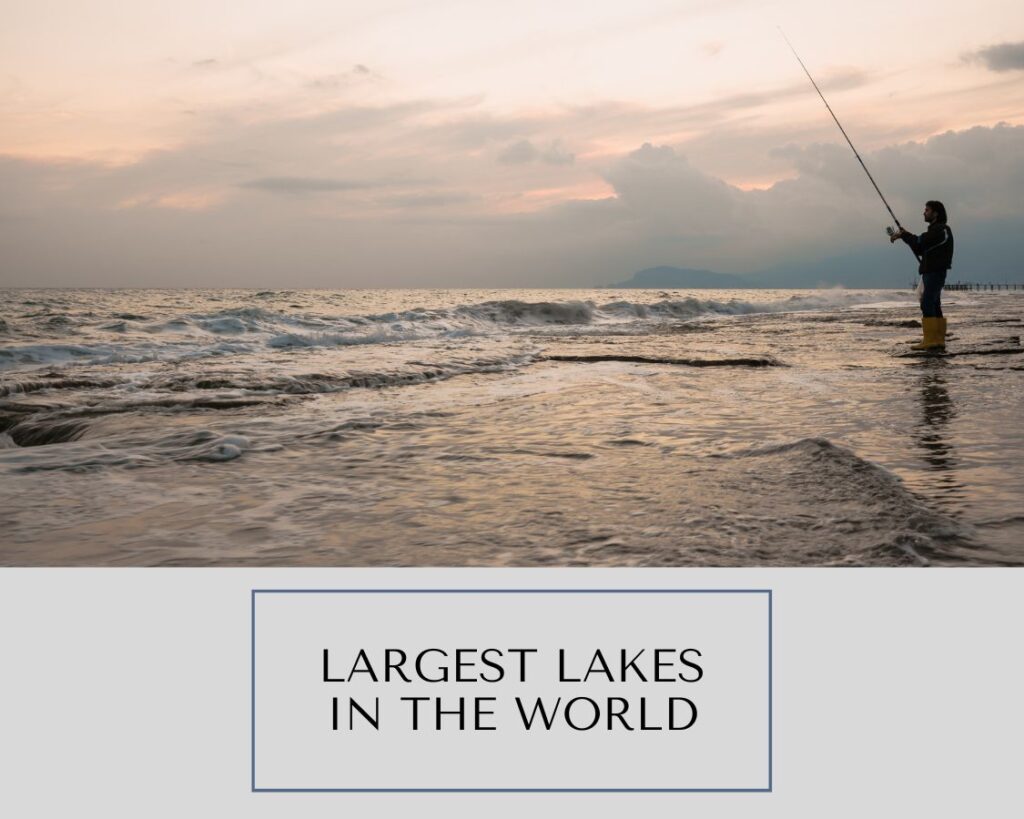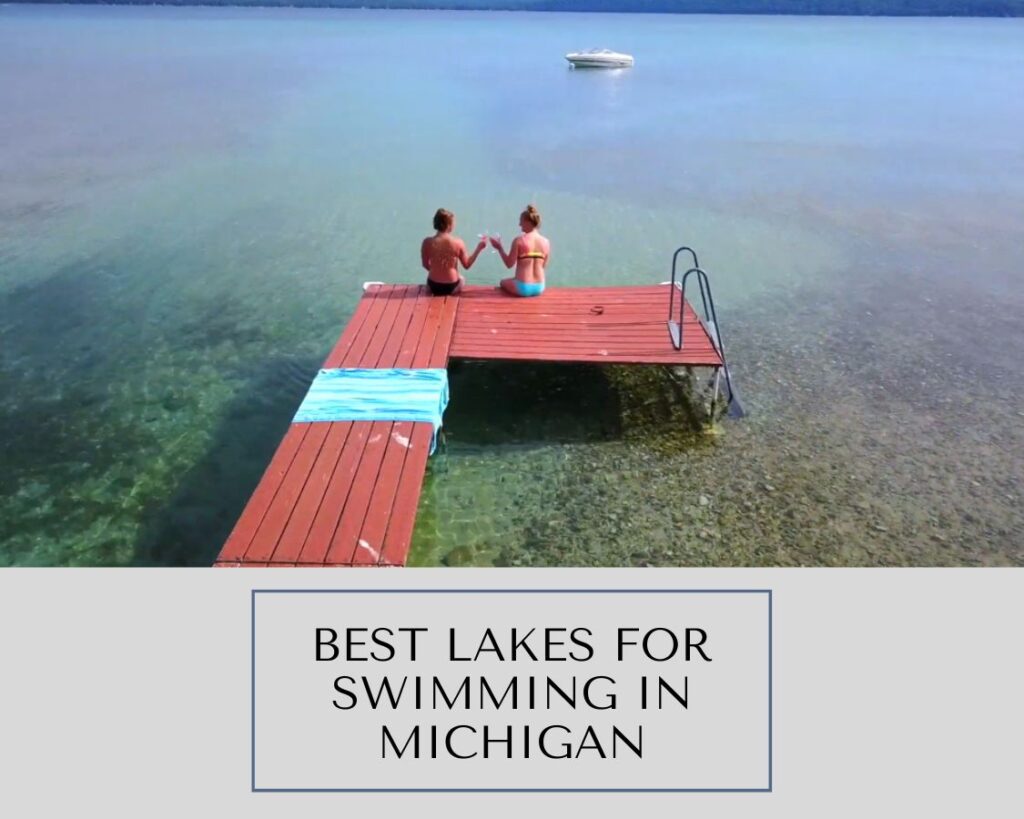If you’re an avid angler looking for your next fishing adventure, Florida is undoubtedly one of the best destinations. With its diverse landscapes, abundant aquatic life, and year-round fishing opportunities, the Sunshine State offers an angler’s paradise. In this article, we’ll explore Florida’s 13 best fishing lakes, each with unique charm and exceptional angling experiences.
1. Lake Okeechobee: A Topwater Fisher’s Dream
Lake Okeechobee, Florida’s largest freshwater lake, is a topwater fishing paradise. Nicknamed “The Big O,” it’s renowned for its trophy-sized largemouth bass and year-round fishing season.
The lake’s extensive marshes and vegetation provide ample cover for bass, making it ideal for topwater lures like frogs, buzz baits, and poppers. When bass feeds aggressively, they’ll often smash topwater lures on the surface, providing an exhilarating experience for anglers.
The best time of year for topwater fishing at Lake Okeechobee is spring and early summer when the bass spawns and feeds heavily. However, topwater lures can be effective year-round, especially during low-light conditions such as early morning and late evening.
Tips for topwater fishing at Lake Okeechobee:
- Choose lures that match the size and color of the baitfish that bass are feeding on.
- Cast your lures into and around vegetation and other cover.
- Work your lures slowly and erratically to create a realistic presentation.
- Be patient and persistent. Bass may strike immediately or follow your lure before hitting it.
If you’re looking for a topwater fishing adventure, Lake Okeechobee is the place to go. With its trophy-sized bass and year-round fishing season, “The Big O” is a topwater angler’s dream.
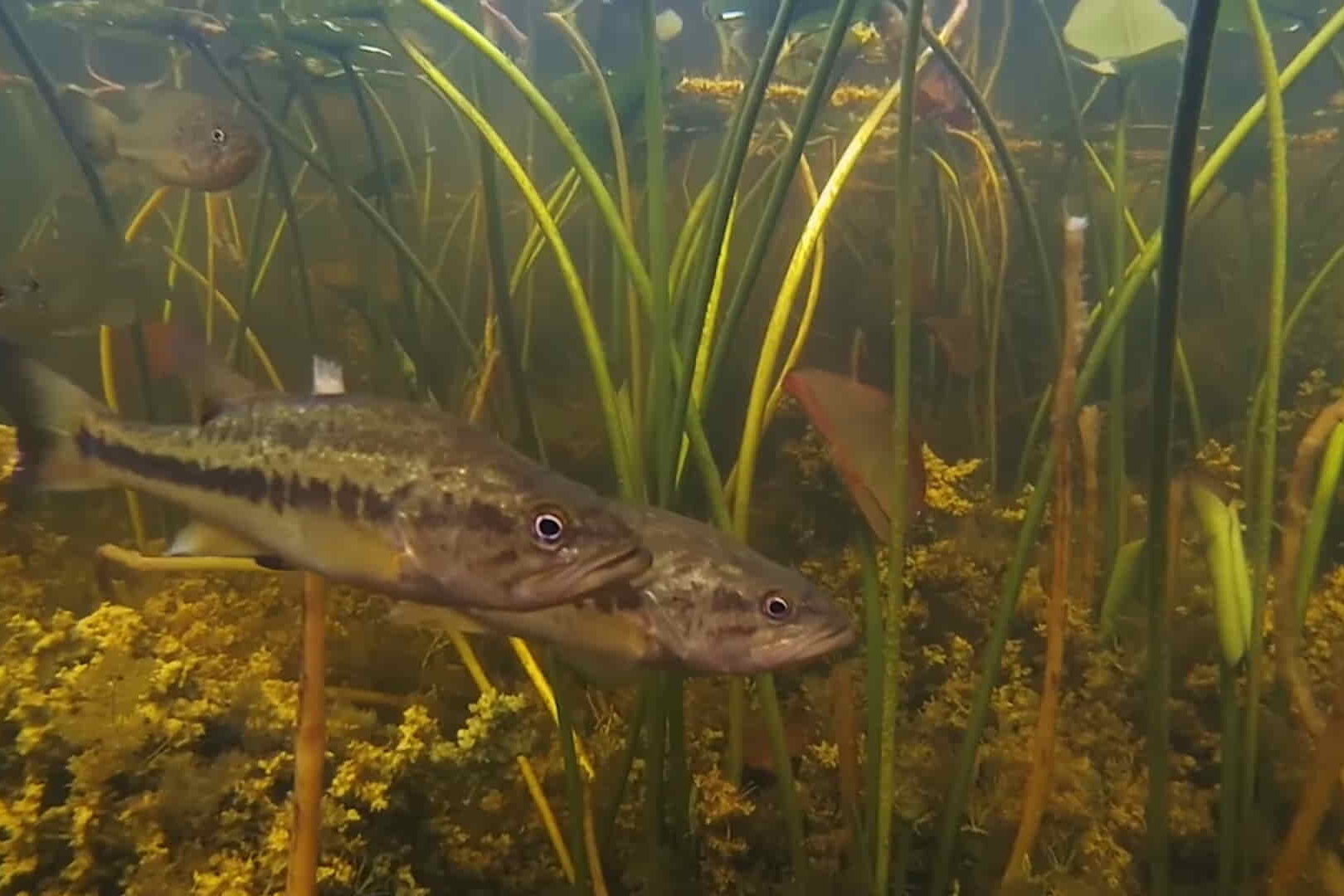
2. St. Johns River – A Bass Haven
The St. Johns River, Florida’s longest river, is a bass haven. It’s home to a thriving largemouth bass population, including many trophy-sized fish. The river’s diverse habitat, including weed beds, lily pads, and cypress trees, provides ample cover for bass, making it an ideal place to fish.
The best time to fish for bass on the St. Johns River is during winter and spring when the water is more relaxed and the fish are more active. However, bass can be caught year-round in the river.
Popular bass fishing techniques on the St. Johns River include:
- Casting topwater lures: Topwater lures such as frogs, buzz baits, and poppers are effective for catching bass on the St. Johns River, especially during low-light conditions.
- Flipping and pitching: Flipping and pitching are techniques that cast soft plastic lures into thick covers. This is a great way to catch bass hiding in weed beds or lily pads.
- Carolina rigging: Carolina rigging is a versatile technique that can be used to fish various lures, including soft plastics, crankbaits, and spinnerbaits. It’s a good choice for fishing in deeper water or areas with much cover.
Tips for fishing for bass on the St. Johns River:
- Fish the cover: Bass love to hold in somebody. Focus your fishing efforts on areas with weed beds, lily pads, cypress trees, and other structures.
- Be patient and persistent: Bass can be selective feeders, so don’t give up if you don’t get a bite immediately. Keep casting and moving your lure until you find the fish.
- Use the right gear: Use a medium-heavy or heavy-action rod and reel with a braided line. This will give you the power to cast heavy lures and pull bass out of thick cover.
The St. Johns River is a great place to start if you want to catch a trophy bass. The river is a true bass haven with its diverse habitat and abundant bass population.
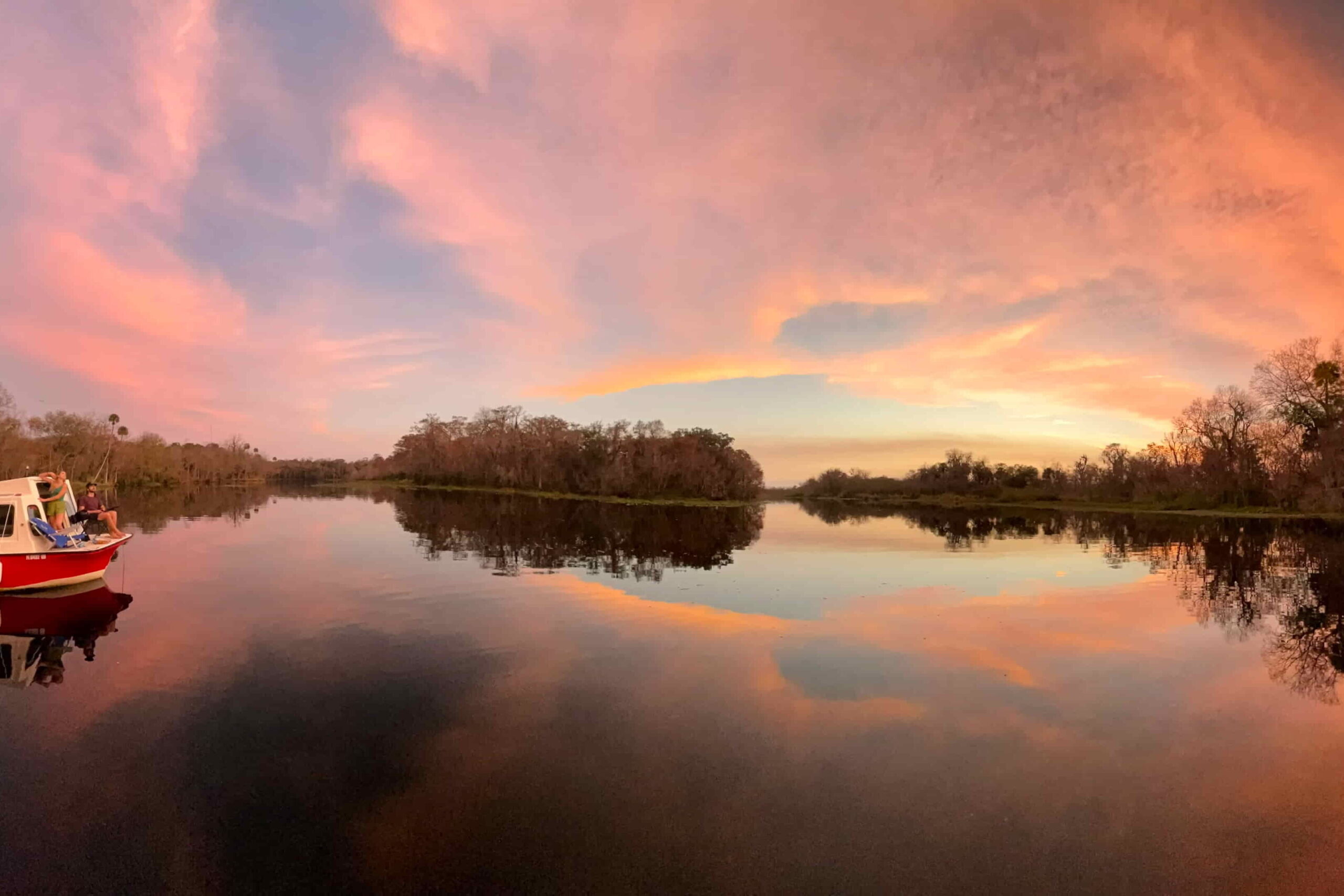
3. Lake Seminole – The Panfish Paradise
Lake Seminole, located on the border of Florida and Georgia, is a panfish paradise. The lake is home to various panfish species, including crappie, bluegill, and redear sunfish. These fish are known for their aggressive feeding habits and delicious taste.
The best time to fish for panfish on Lake Seminole is spring and fall when the fish are more active and easier to catch. However, panfish can be caught year-round in the lake.
Popular panfish fishing techniques on Lake Seminole include:
- Jigging: Jigging is a versatile technique that can be used to fish for panfish in various water depths and conditions. To jig, cast your jig out and reel it in with a series of short, sharp jerks.
- Minnow fishing: Panfish naturally eat minnows as part of their diet, so they are a great bait to use. You can fish minnows on various rigs, including a bobber or drop-shot rig.
- Crickets: Crickets are another natural food source for panfish. You can fish crickets on a small hook and bobber rig.
Tips for fishing for panfish on Lake Seminole:
- Fish the shallows: Panfish are typically found in shallow water, so focus your fishing efforts on less than 10 feet deep areas.
- Fish the cover: Panfish like to hold in covers, such as weed beds, lily pads, and docks. Cast your lure into and around these areas to increase your chances of getting a bite.
- Use light tackle: Panfish are relatively small fish, so you don’t need to use heavy tackle. A light-action rod and reel with a 4-6 pound test line is ideal.
If you’re looking for a fun and rewarding fishing experience, Lake Seminole is the perfect place to go. With its abundant panfish population and variety of fishing techniques, the lake has something to offer everyone.
Bonus tip: If you’re fishing for crappie, try using a crappie light at night. Crappies are attracted to light, so this can be a great way to catch them after dark.
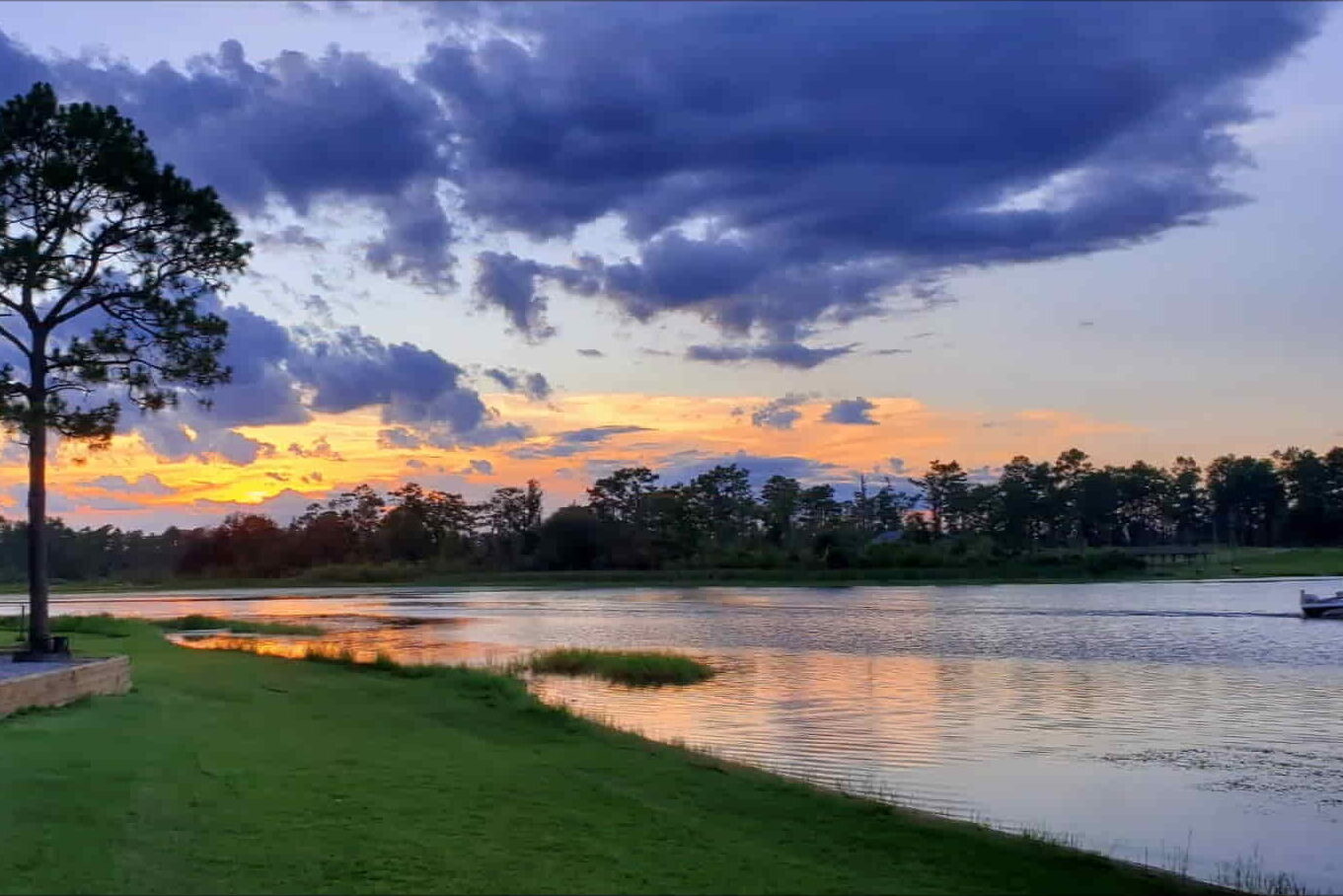
4. Lake Tohopekaliga – Trophy Bass Galore
Lake Tohopekaliga, also known as Lake Toho, is a trophy bass angler’s paradise. The lake is home to a thriving population of largemouth bass, including many trophy-sized fish. Lake Toho has produced the Bassmaster record for the heaviest five-bass limit ever caught, and the lake’s unofficial bass fishing record is over 17 pounds.
The best time to fish for trophy bass on Lake Toho is during the spring and fall months when the water is cooler and the fish are more active. However, trophy bass can be caught year-round in the lake.
Popular techniques for fishing for trophy bass on Lake Toho include:
- Flipping and pitching: Flipping and pitching are techniques that cast soft plastic lures into thick covers. This is a great way to catch bass that are hiding in weed beds, lily pads, and other structures.
- Carolina rigging: Carolina rigging is a versatile technique that can be used to fish a variety of lures, including soft plastics, crankbaits, and spinnerbaits. It’s a good choice for fishing in deeper water or areas with a lot of cover.
- Topwater fishing: Topwater lures such as frogs, buzz baits, and poppers can effectively catch trophy bass on Lake Toho, especially during low-light conditions.
Tips for fishing for trophy bass on Lake Toho:
- Fish the cover: Trophy bass love to hold in cover, so focus your fishing efforts on areas with weed beds, lily pads, cypress trees, and other structures.
- Be patient and persistent: Trophy bass can be finicky feeders, so don’t give up if you don’t get a bite right away. Keep casting and moving your lure until you find the fish.
- Use the right gear: Use a medium-heavy or heavy-action rod and reel with a braided line. This will give you the power to cast heavy lures and pull bass out of thick cover.
If you’re looking for a chance to catch a trophy bass, Lake Toho is the place to go. With its abundant bass population and diverse habitat, the lake is a true trophy bass paradise.
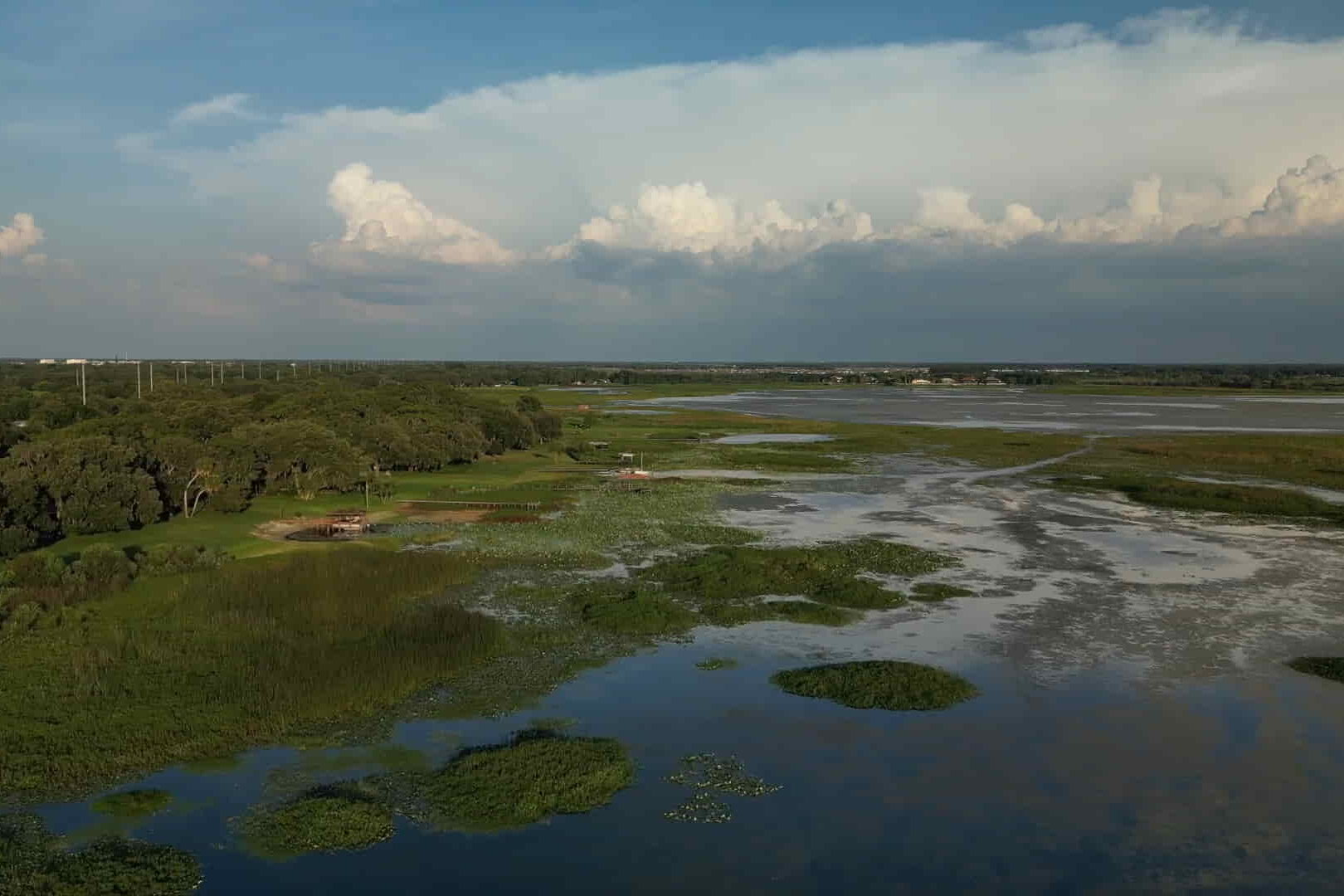
5. Lake George – A Hidden Gem
Lake George, located in the Adirondack Mountains of New York, is a hidden gem for anglers. Lake trout, landlocked salmon, smallmouth bass, and largemouth bass are just a few of the fish species that may be found in the lake. The lake’s crystal-clear water provides anglers with excellent visibility, making it easy to spot fish.
The best time to fish for lake trout and landlocked salmon on Lake George is during the spring and fall months when the water is cooler and the fish are more active. Smallmouth bass and largemouth bass can be caught year-round in the lake.
Popular fishing techniques on Lake George include:
- Trolling: Trolling is a great way to catch lake trout and landlocked salmon. Troll with spoons, crankbaits, or spinners in deep water near drop-offs and reefs.
- Jigging: Jigging is a versatile technique that can be used to fish for all types of fish on Lake George. To jig, simply cast your jig out and reel it in with a series of short, sharp jerks.
- Casting: Casting lures such as spinnerbaits, jerkbaits, and soft plastics is a great way to catch bass on Lake George. Cast your lures into and around covers such as weed beds, docks, and rocky areas.
Tips for fishing on Lake George:
- Be aware of the lake’s regulations: Lake George has a number of fishing regulations in place to protect the lake’s fish population. Be sure to check the New York State Department of Environmental Conservation website for the latest regulations before you go fishing.
- Use the right gear: Lake George is a large and deep lake, so it’s important to use the right gear. A medium-heavy or heavy-action rod and reel with braided line is ideal for fishing for lake trout, landlocked salmon, and bass.
- Be patient and persistent: Fishing on any lake can be challenging, but Lake George is especially challenging due to its clear water and abundance of structure. Be patient and keep casting, and you’ll eventually be rewarded with a bite.
If you’re looking for a unique and challenging fishing experience, Lake George is the place to go. With its crystal-clear water, diverse fish population, and variety of fishing techniques, Lake George has something to offer everyone.

6. Lake Talquin – Tranquil Crappie Waters
Lake Talquin, located in the Florida Panhandle, is a tranquil crappie fishing paradise. The lake is home to a thriving population of crappie, including many trophy-sized fish. Lake Talquin’s calm waters and abundant cover make it an ideal place to catch these elusive fish.
The best time to fish for crappie on Lake Talquin is during the spring and fall months, when the water is cooler, and the fish are more active. However, crappie can be caught year-round in the lake.
Popular crappie fishing techniques on Lake Talquin include:
- Jigging: Jigging is a versatile technique that can be used to fish for crappie in various water depths and conditions. To jig, cast your jig out and reel it in with a series of short, sharp jerks.
- Minnow fishing: Because crappie naturally consumes minnows, they make excellent lures. Minnows can be caught using a variety of rigs, such as a bobber rig or a drop-shot rig.
- Spider rigging: Spider rigging is a technique that involves fishing multiple jigs on a single line. This is a great way to cover a lot of water and increase your chances of catching crappie.
Tips for fishing for crappie on Lake Talquin:
- Fish the cover: Crappies like to hold in covers, such as weed beds, lily pads, and docks. Cast your lure into and around these areas to increase your chances of getting a bite.
- Use light tackle: Crappies are relatively small fish, so you don’t need a heavy kit. A light-action rod and reel with a 4-6 pound test line is ideal.
- Be patient and persistent: Crappies can be selective feeders, so don’t give up if you don’t get a bite immediately. Keep casting and moving your lure until you find the fish.
If you’re looking for a relaxing and rewarding fishing experience, Lake Talquin is the perfect place to go. With its calm waters, abundant crappie population, and variety of fishing techniques, Lake Talquin has something to offer everyone.
Bonus tip: If you’re fishing for crappie at night, try using a crappie light. Crappies are attracted to light, so this can be a great way to catch them after dark.
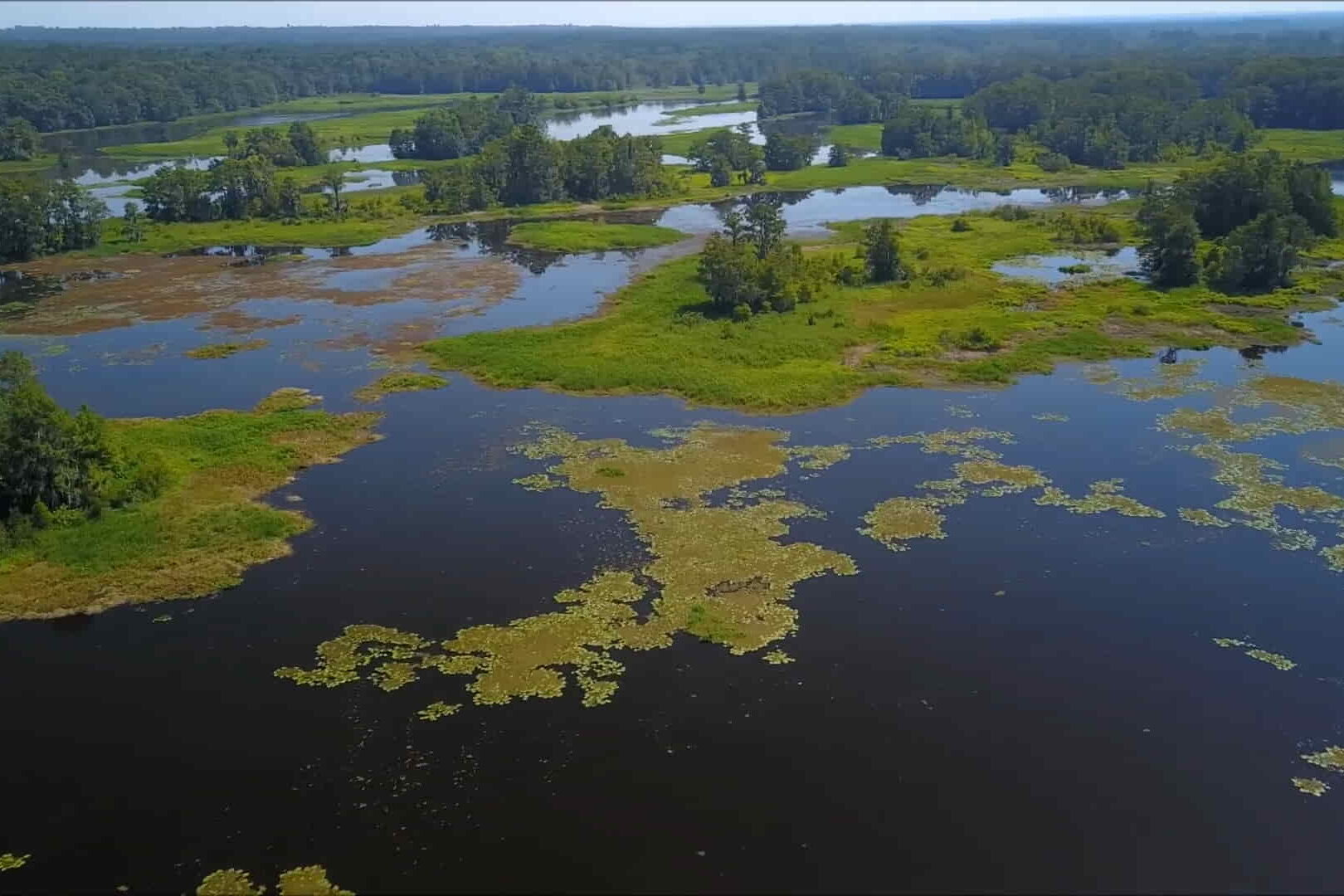
7. Lake Kissimmee – A Bass Fisherman’s Dream
Lake Kissimmee, located in central Florida, is a bass fisherman’s dream. The lake is home to a thriving population of largemouth bass, including many trophy-sized fish. Lake Kissimmee’s extensive marshes and vegetation make it an ideal place for bass fishing.
The best time to fish for bass on Lake Kissimmee is during the spring and fall months when the water is cooler and the fish are more active. However, bass can be caught year-round in the lake.
Popular bass fishing techniques on Lake Kissimmee include:
- Flipping and pitching: Flipping and pitching are techniques used to cast soft plastic lures into thick covers. This is a great way to catch bass that are hiding in weed beds, lily pads, and other structures.
- Carolina rigging: Carolina rigging is a versatile technique that can be used to fish a variety of lures, including soft plastics, crankbaits, and spinnerbaits. It’s a good choice for fishing in deeper water or areas with a lot of cover.
- Topwater fishing: Topwater lures such as frogs, buzz baits, and poppers can be effective for catching bass on Lake Kissimmee, especially during low-light conditions.
Tips for fishing for bass on Lake Kissimmee:
- Fish the cover: Bass love to hold in cover, so focus your fishing efforts on areas with weed beds, lily pads, cypress trees, and other structures.
- Be patient and persistent: Bass can be finicky feeders, so don’t give up if you don’t get a bite right away. Keep casting and moving your lure until you find the fish.
- Use the right gear: Use a medium-heavy or heavy-action rod and reel with a braided line. This will give you the power to cast heavy lures and pull bass out of thick cover.
If you’re looking for a chance to catch a trophy bass, Lake Kissimmee is the place to go. With its abundant bass population and diverse habitat, the lake is a true bass fisherman’s dream.

8. Lake Tarpon – Urban Fishing Bliss
Lake Tarpon, located in Pinellas County, Florida, is an urban fishing oasis. The lake is home to a variety of fish species, including largemouth bass, bluegill, redear sunfish, and crappie. Lake Tarpon is easily accessible from major highways and is surrounded by parks and recreation areas, making it a popular destination for anglers of all skill levels.
The best time to fish on Lake Tarpon is during the spring and fall months when the water is cooler and the fish are more active. However, fish can be caught year-round in the lake.
Popular fishing techniques on Lake Tarpon include:
- Casting: Casting lures such as spinnerbaits, jerkbaits, and soft plastics is a great way to catch bass on Lake Tarpon. Cast your lures into and around covers such as weed beds, docks, and rocky areas.
- Live bait fishing: Live bait such as minnows, shiners, and frogs can be used to catch bass, crappie, and other fish in Lake Tarpon. Fish your live bait under a bobber or on a Carolina rig.
- Fly fishing: Fly fishing is a popular technique for catching bass, bluegill, and other fish on Lake Tarpon. A variety of fly fishing patterns can be used, depending on the time of year and the species of fish you are targeting.
Tips for fishing on Lake Tarpon:
- Be aware of the lake’s regulations: Lake Tarpon has a number of fishing regulations in place to protect the lake’s fish population. Before you go fishing, make sure to check the Florida Fish and Wildlife Conservation Commission website for the most recent rules.
- Use the right gear: Lake Tarpon is a relatively shallow lake, so you don’t need to use heavy gear. A light- to medium-action rod and reel with a 4-6-pound test line is ideal for most fishing techniques.
- Be patient and persistent: Fishing on any lake can be challenging, but Lake Tarpon can be especially challenging due to its clear water and abundance of structure. Be patient and keep casting, and you’ll eventually be rewarded with a bite.
If you’re looking for a convenient and enjoyable fishing experience, Lake Tarpon is the perfect place to go. With its diverse fish population, variety of fishing techniques, and easy accessibility, Lake Tarpon is an urban fishing paradise.
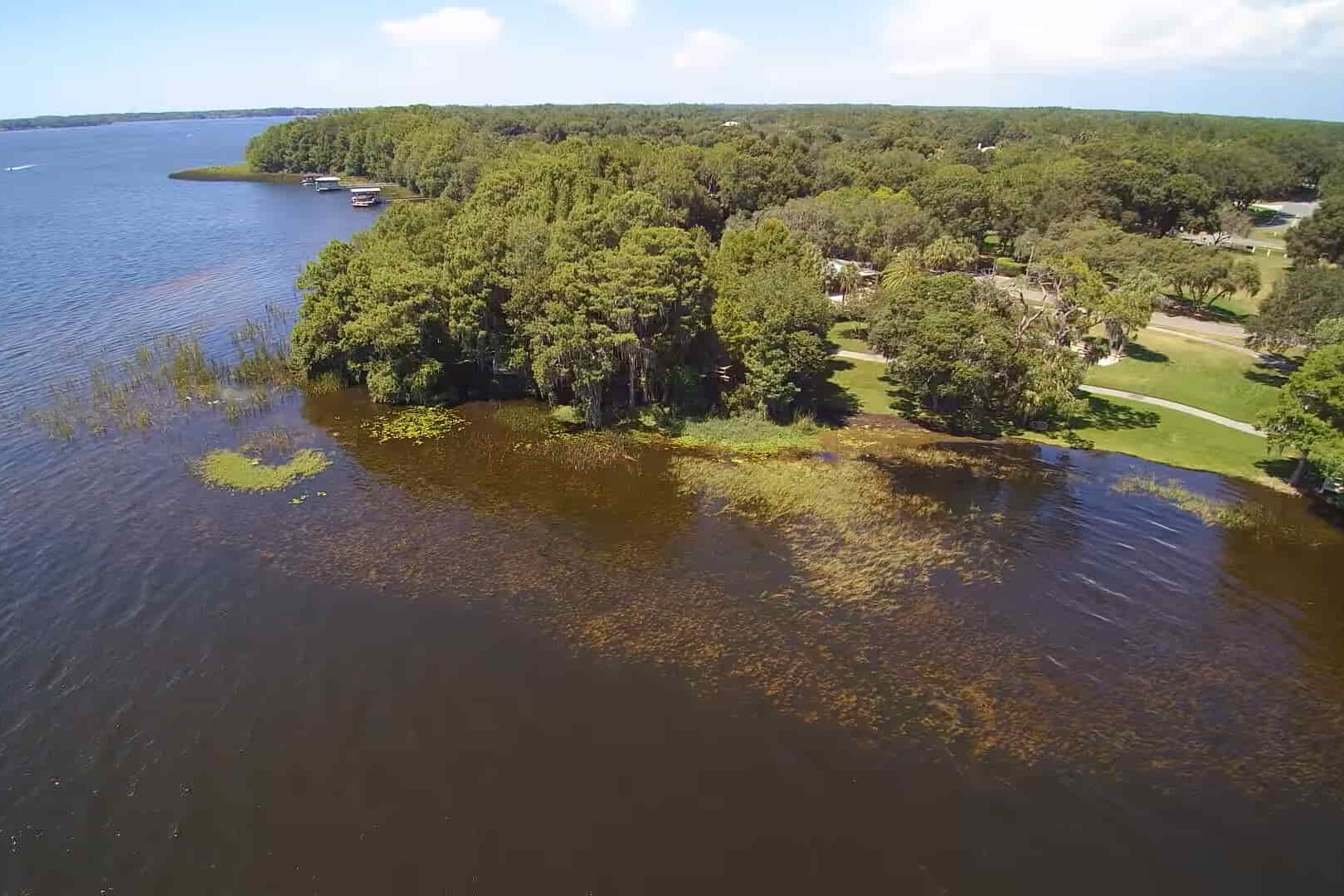
9. Lake Istokpoga – Secluded Beauty
Lake Istokpoga, also known as Lake Okeechobee’s sister lake, is a secluded beauty located in Osceola County, Florida. It is the fifth-largest freshwater lake in the state and is renowned for its trophy-sized largemouth bass and its diverse wildlife.
Lake Istokpoga is surrounded by marshlands and cypress forests, making it a popular destination for birders, kayakers, and canoeists. The lake is also home to a variety of other fish species, including black crappie, bluegill, and redear sunfish.
The best time to fish on Lake Istokpoga is during the spring and fall months when the water is cooler and the fish are more active. However, fish can be caught year-round in the lake.
Popular fishing techniques on Lake Istokpoga include:
- Casting: Casting lures such as spinnerbaits, jerkbaits, and soft plastics is a great way to catch bass on Lake Istokpoga. Cast your lures into and around covers such as weed beds, lily pads, and cypress trees.
- Live bait fishing: Live bait such as minnows, shiners, and frogs can be used to catch bass, crappie, and other fish in Lake Istokpoga. Fish your live bait under a bobber or on a Carolina rig.
- Fly fishing: Fly fishing is a popular technique for catching bass, bluegill, and other fish on Lake Istokpoga. A variety of fly fishing patterns can be used, depending on the time of year and the species of fish you are targeting.
Tips for fishing on Lake Istokpoga:
- Be aware of the lake’s regulations: Lake Istokpoga has several fishing regulations in place to protect the lake’s fish population. Be sure to check the Florida Fish and Wildlife Conservation Commission website for the latest regulations before you go fishing.
- Use the right gear: Lake Istokpoga is a relatively shallow lake, so you don’t need to use heavy gear. A light- to medium-action rod and reel with a 4-6-pound test line is ideal for most fishing techniques.
- Be patient and persistent: Fishing on any lake can be challenging, but Lake Istokpoga can be especially challenging due to its clear water and abundance of structure. Be patient and keep casting, and you’ll eventually be rewarded with a bite.
If you’re looking for a secluded and scenic fishing experience, Lake Istokpoga is the perfect place to go. With its diverse fish population, variety of fishing techniques, and abundance of wildlife, Lake Istokpoga is a true angler’s paradise.
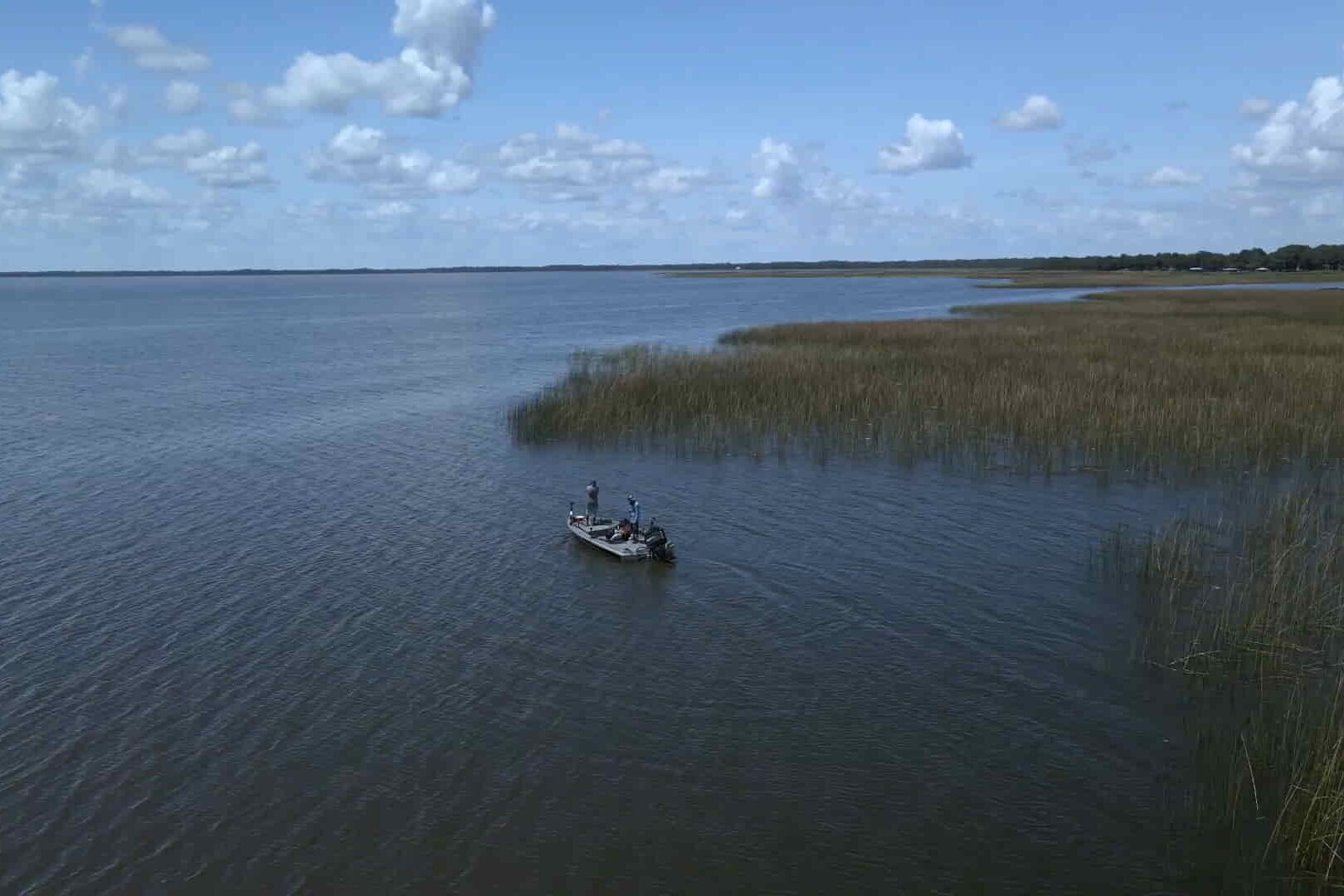
10. Lake Harris – A Diverse Fishery
Lake Harris is a large, shallow lake located in central Florida. It is the largest lake in the Harris Chain of Lakes, which is a chain of seven interconnected lakes. Lake Harris is known for its diverse fishery, which includes largemouth bass, bluegill, redear sunfish, crappie, and catfish.
Largemouth Bass
Lake Harris is a premier destination for largemouth bass fishing. The lake has a large population of bass, including many trophy-sized fish. The best time to fish for bass on Lake Harris is during the spring and fall months when the water is cooler and the fish are more active. However, bass can be caught year-round in the lake.
Popular bass fishing techniques on Lake Harris include:
- Casting: Casting lures such as spinnerbaits, jerkbaits, and soft plastics is a great way to catch bass on Lake Harris. Cast your lures into and around covers such as weed beds, lily pads, and cypress trees.
- Flipping and pitching: Flipping and pitching are techniques used to cast soft plastic lures into thick covers. This is a great way to catch bass that are hiding in weed beds, lily pads, and other structures.
- Topwater fishing: Topwater lures such as frogs, buzz baits, and poppers can be effective for catching bass on Lake Harris, especially during low-light conditions.
Panfish
Lake Harris is also a great lake for pan-fishing. Bluegill, redear sunfish, and crappie are all abundant in the lake. The best time to fish for panfish on Lake Harris is during the spring and fall months when the fish are more active. However, panfish can be caught year-round in the lake.
Popular panfish fishing techniques on Lake Harris include:
- Live bait fishing: Live bait such as minnows and crickets is the most effective way to catch panfish on Lake Harris. Fish your live bait under a bobber or on a small jig.
- Casting small lures: Casting small lures such as spinners and spoons can also be effective for catching panfish on Lake Harris. Cast your lures into and around covers such as weed beds and lily pads.
Catfish
Lake Harris is also a good lake for catfish fishing. Channel catfish, blue catfish, and flathead catfish are all present in the lake. The best time to fish for catfish on Lake Harris is during the summer months when the water is warmer and the fish are more active. However, catfish can be caught year-round in the lake.
Popular catfish fishing techniques on Lake Harris include:
- Bottom fishing: Bottom fishing with live bait is the most effective way to catch catfish on Lake Harris. Fish your live bait on the bottom in areas with deep water and cover.
- Jug fishing: Jug fishing is another popular technique for catching catfish on Lake Harris. Set out your jugs in areas with deep water and cover.
Tips for Fishing Lake Harris
- Be aware of the lake’s regulations: Lake Harris has a number of fishing regulations in place to protect the lake’s fish population. Be sure to check the Florida Fish and Wildlife Conservation Commission website for the latest regulations before you go fishing.
- Use the right gear: Lake Harris is a relatively shallow lake, so you don’t need to use heavy gear. A light- to medium-action rod and reel with a 4-6-pound test line is ideal for most fishing techniques.
- Be patient and persistent: Fishing on any lake can be challenging, but Lake Harris can be especially challenging due to its clear water and abundance of structure. Be patient and keep casting, and you’ll eventually be rewarded with a bite.
Lake Harris is a great lake for anglers of all skill levels. With its diverse fishery and abundance of fish, Lake Harris offers something for everyone.
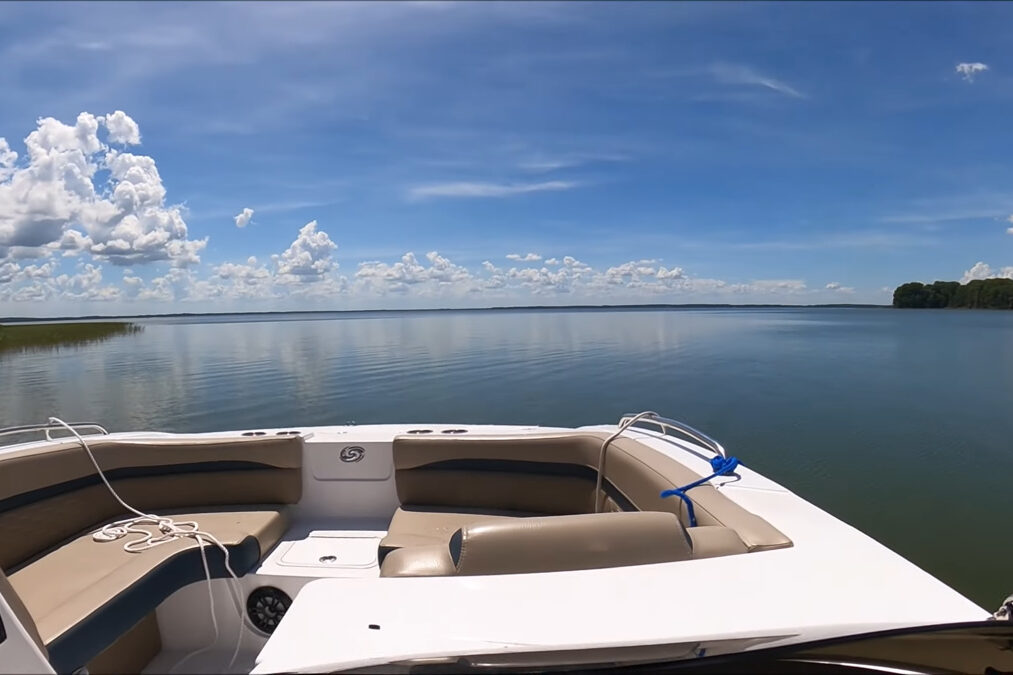
11. Lake Monroe – Urban Fishing at Its Best
Lake Monroe, located in the heart of Sanford, Florida, is a premier urban fishing destination. The lake is home to a variety of fish species, including largemouth bass, bluegill, redear sunfish, crappie, and catfish. Lake Monroe is easily accessible from major highways and is surrounded by parks and recreation areas, making it a popular spot for anglers of all skill levels.
The best time to fish on Lake Monroe is during the spring and fall months when the water is cooler and the fish are more active. However, fish can be caught year-round in the lake.
Popular fishing techniques on Lake Monroe include:
- Casting: Casting lures such as spinnerbaits, jerkbaits, and soft plastics is a great way to catch bass on Lake Monroe. Cast your interests into and around covers such as weed beds, docks, and rocky areas.
- Live bait fishing: Live bait such as minnows, shiners, and frogs can be used to catch bass, crappie, and other fish in Lake Monroe. Fish your live bait under a bobber or on a Carolina rig.
- Fly fishing: Fly fishing is a popular technique for catching bass, bluegill, and other fish on Lake Monroe. A variety of fly fishing patterns can be used, depending on the time of year and the species of fish you are targeting.
- Be aware of the lake’s regulations: Lake Monroe has a number of fishing regulations in place to protect the lake’s fish population. Be sure to check the Florida Fish and Wildlife Conservation Commission website for the latest regulations before you go fishing.
- Use the right gear: Lake Monroe is a relatively shallow lake, so you don’t need heavy gear. A light- to medium-action rod and reel with a 4-6-pound test line is ideal for most fishing techniques.
- Be patient and persistent: Fishing on any lake can be challenging, but Lake Monroe can be especially challenging due to its clear water and abundance of structure. Be patient and keep casting, and you’ll eventually be rewarded with a bite.
If you’re looking for a convenient and enjoyable fishing experience, Lake Monroe is the perfect place to go. With its diverse fish population, variety of fishing techniques, and easy accessibility, Lake Monroe is an urban fishing paradise.
Tips for fishing Lake Monroe:
- Target the right areas: Lake Monroe has a variety of different fishing areas, so it’s important to target the right spots depending on the fish you’re looking to catch. For example, bass can be found around docks, weed beds, and rocky areas, while panfish can be found in shallower water with plenty of cover.
- Use the right bait: As mentioned above, live bait is a great option for catching a variety of fish in Lake Monroe. However, you can also catch fish using artificial lures. Some popular attractions for Lake Monroe include spinnerbaits, jerkbaits, and soft plastics.
- Be patient and persistent: Fishing can be challenging sometimes, but it’s essential to be patient and persistent. Keep casting and moving around until you find the fish.
With a little effort, you’re sure to have a successful fishing trip on Lake Monroe.

12. Lake Santa Fe – Serenity and Quality Fishing
Lake Santa Fe, located in Alachua County, Florida, is a hidden gem for anglers seeking serenity and quality fishing. The lake is known for its clear water, abundant vegetation, and diverse fish population, including largemouth bass, bluegill, redear sunfish, and crappie.
The best time to fish on Lake Santa Fe is spring and fall when the water is cooler, and the fish are more active. However, fish can be caught year-round in the lake.
Popular fishing techniques on Lake Santa Fe include:
- Casting: Casting lures such as spinnerbaits, jerkbaits, and soft plastics is a great way to catch bass on Lake Santa Fe. Cast your interests into and around covers such as weed beds, cypress trees, and docks.
- Live bait fishing: Live bait such as minnows and crickets is effective for catching bass, panfish, and crappie on Lake Santa Fe. Fish your live bait under a bobber or on a small jig.
- Fly fishing: Fly fishing is a popular technique for catching bass, panfish, and crappie on Lake Santa Fe. Various fly fishing patterns can be used, depending on the time of year and the species of fish you are targeting.
- Be aware of the lake’s regulations: Lake Santa Fe has several fishing regulations in place to protect the lake’s fish population. Be sure to check the Florida Fish and Wildlife Conservation Commission website for the latest rules before you go fishing.
- Use the right gear: Lake Santa Fe is a relatively shallow lake, so you don’t need heavy gear. A light- to medium-action rod and reel with a 4-6-pound test line is ideal for most fishing techniques.
- Be patient and persistent: Fishing on any lake can be challenging, but Lake Santa Fe can be complicated due to its clear water and abundance of structure. Be patient and keep casting; you’ll eventually be rewarded with a bite.
Lake Santa Fe is an excellent lake for anglers of all skill levels. With its serene atmosphere, diverse fish population, and variety of fishing techniques, Lake Santa Fe offers something for everyone.
Tips for fishing Lake Santa Fe:
- Fish early in the morning or late in the evening: The fish on Lake Santa Fe are often more active during the more excellent hours of the day.
- Target fish-holding cover: Bass and other fish are often found outside, such as in weed beds, cypress trees, and docks. Cast your lures into and around these areas to increase your chances of getting a bite.
- Use the right lure: Choose lures that match the size and color of the baitfish that the fish are feeding on. You can also use artificial lures that mimic the appearance and movements of live bait.
Lake Santa Fe is the perfect place if you’re looking for a peaceful and productive fishing experience. With a little effort, you’re sure to have a successful day on the water.
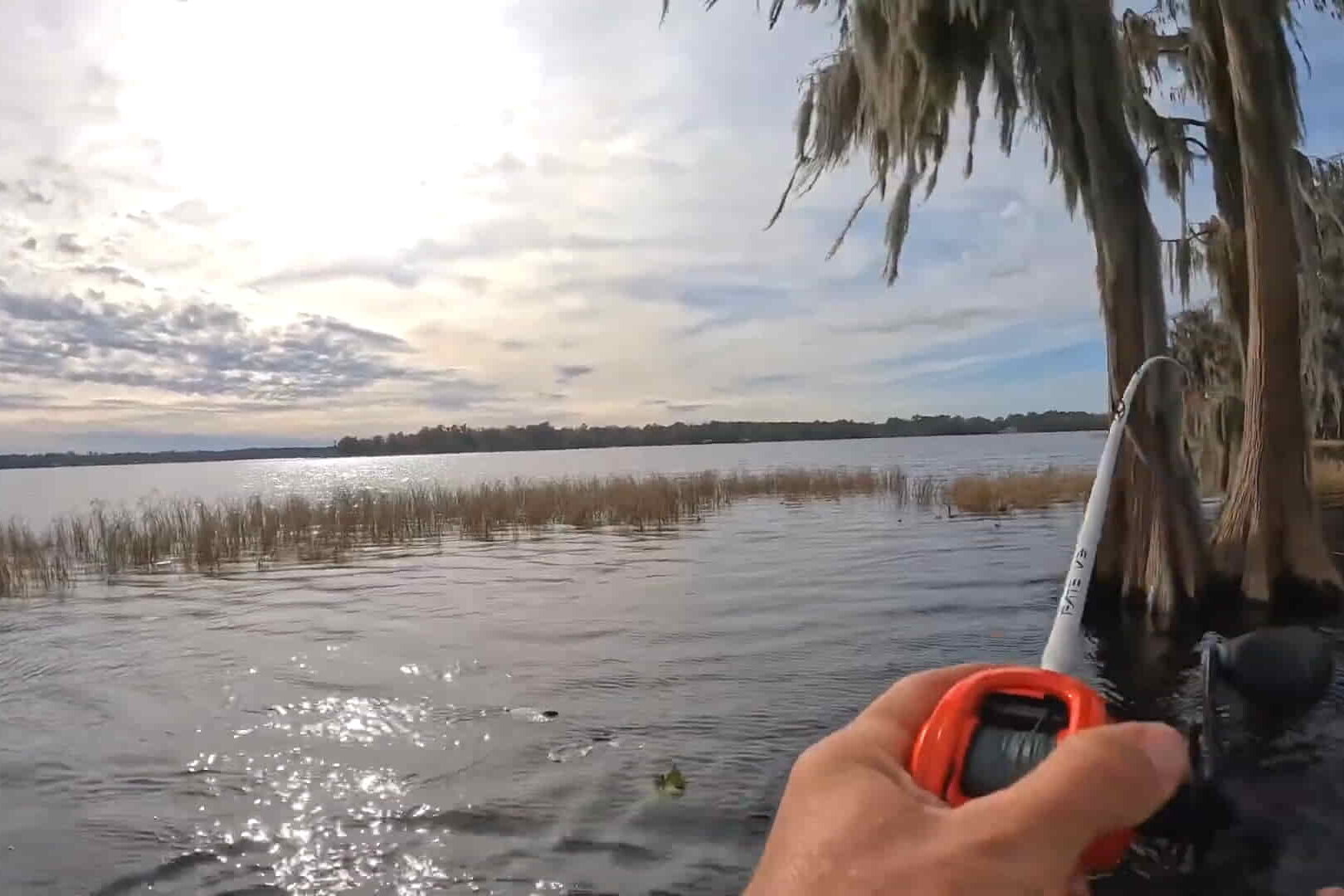
13. Lake Apopka – A Birdwatcher’s Paradise
Lake Apopka, located in central Florida, is a birdwatcher’s paradise. The lake is home to over 360 species of birds, including many migratory species that make their way to Lake Apopka each year. The lake’s diverse habitat, including marshes, swamps, and forests, provides a variety of feeding and nesting areas for birds.
Lake Apopka is a great place to see a variety of waterbirds, such as herons, egrets, ducks, and geese. The lake is also home to some shorebirds, including sandpipers, plovers, and terns. In addition, Lake Apopka is a great place to see raptors, such as hawks, eagles, and owls.
The best time to go birdwatching at Lake Apopka is spring and fall when the weather is mild and the birds are migrating. However, birdwatching can be enjoyed at Lake Apopka year-round.
Tips for birdwatching at Lake Apopka:
- Use binoculars or a spotting scope: This will allow you to get a closer look at the birds and identify them more easily.
- Be quiet and patient: Birds are easily spooked, so it’s essential to be calm and patient when you’re birdwatching.
- Please pay attention to your surroundings: Birds can be found in various habitats, so it’s essential to pay attention to your surroundings and look for birds in all areas.
- Use a field guide: A field guide can help you identify the different species of birds that you see.
Here are some of the most common birds that can be seen at Lake Apopka:
- Waterbirds: herons, egrets, ducks, geese, ibis, spoonbills, storks
- Shorebirds: sandpipers, plovers, terns, gulls, skimmers, oystercatchers
- Raptors: hawks, eagles, kites, owls
- Songbirds: warblers, vireos, thrushes, sparrows, finches
- Woodpeckers: woodpeckers, sapsuckers, flickers
- Kingfishers: kingfishers
- Other birds: nightjars, woodcocks, rails, cranes, limpkins
Lake Apopka is a great place to experience the diversity of Florida’s birdlife. With its abundance of birds and various habitats, Lake Apopka is a must-visit for any birdwatcher.
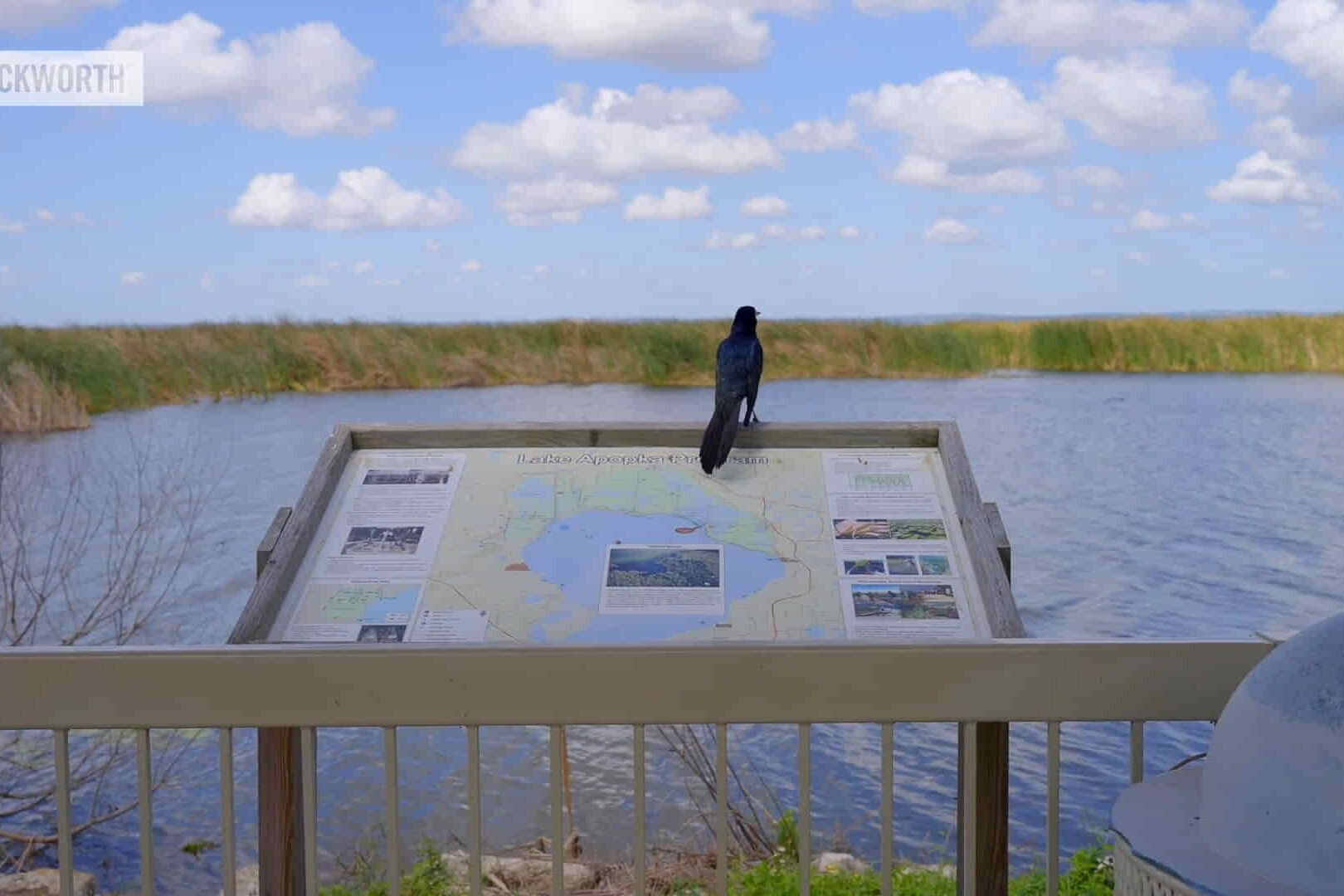
Conclusion
Florida’s fishing lakes offer diverse angling experiences, from trophy bass fishing to pan fishing in tranquil settings. Whether you’re a seasoned angler or a beginner, these lakes have something to offer for everyone. So, pack your gear, cast your lines, and embark on a fishing adventure in the beautiful state of Florida.
FAQs
Can I fish in these lakes year-round?
Yes, most of these lakes offer year-round fishing opportunities, but it’s essential to check specific regulations and seasons for each lake.
Do I need a fishing license to fish in Florida?
Yes, a fishing license is required for residents and non-residents in Florida, with some exceptions for specific age groups and activities. Be sure to obtain the appropriate license before fishing.
Are there fishing guides available for these lakes?
Yes, many local fishing guides and charters operate on these lakes, providing valuable knowledge and assistance to anglers.
What’s the best time of year to fish in Florida?
Florida offers fishing opportunities year-round, but the best fishing time can vary depending on your target species. Generally, spring and fall are popular seasons for many types of fishing.
Are there camping facilities near these lakes?
Many of these lakes have camping facilities or nearby campgrounds, allowing you to immerse yourself fully in the fishing experience. Be sure to check availability and make reservations if needed.
